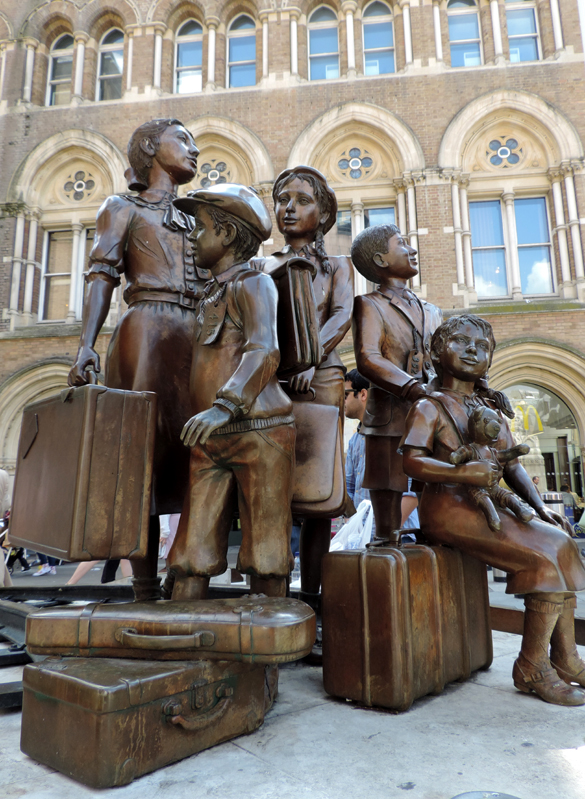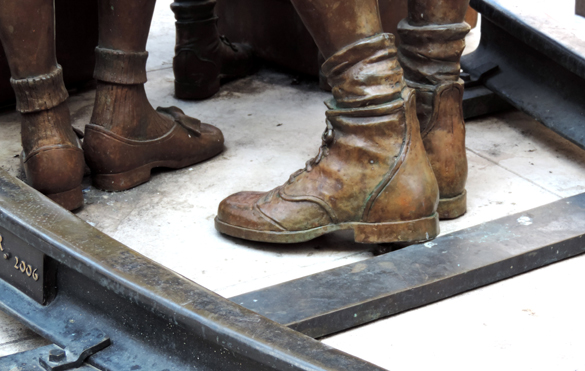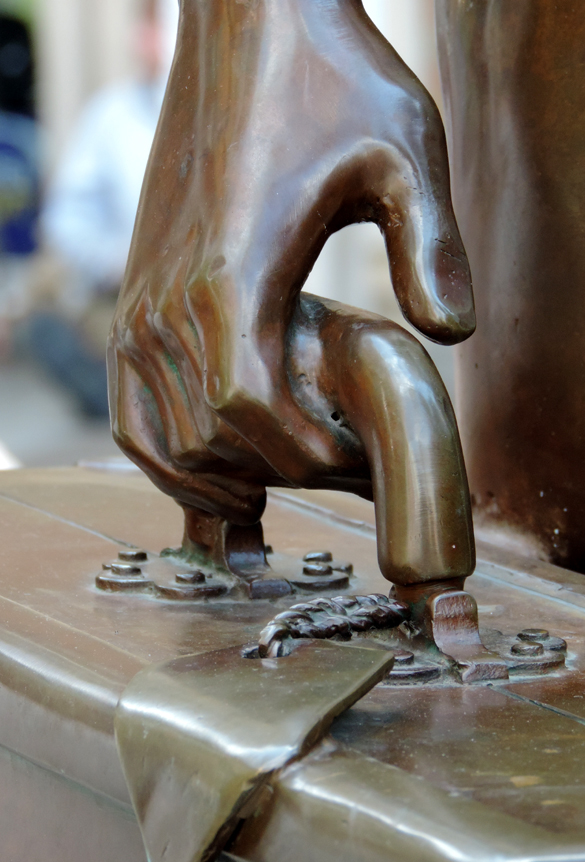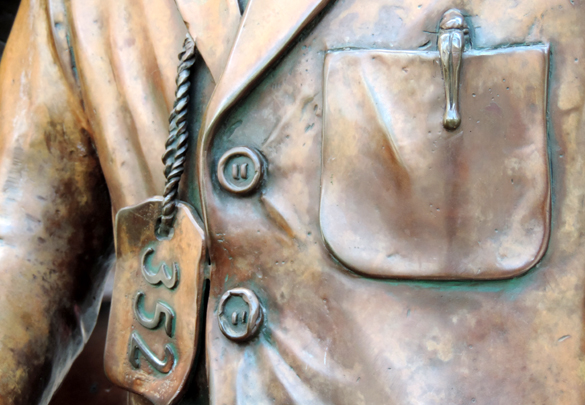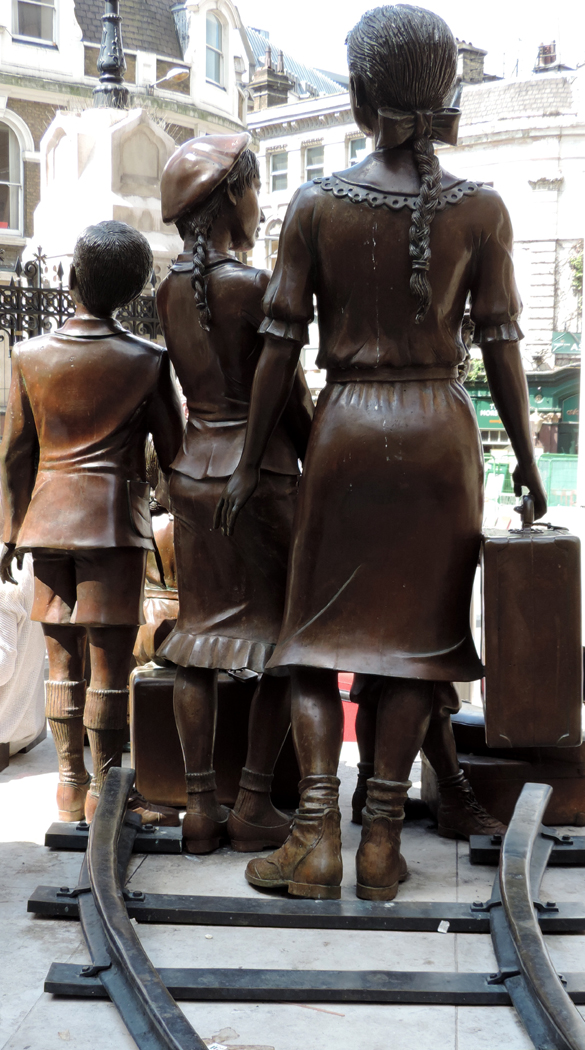Every month, thousands of people read our post on the Kindertransport statue at Liverpool Street Station. I am in London for work. I decide to pay a visit to see how those five confused but proud children are doing.
Previously unnoticed details catch my eye. Does the violin case mean there is a budding musical genius amonst them? I start to take more photographs. A lady in her eighties touches my arm. “They are beautiful aren’t they! I knew one of them. There were thousands of them: jewish children fleeing to England. It was years before that awful war.” I reply that indeed the bronze memorial is a very beautiful, poignant sculpture. “This is where I always meet my son” she continues. “We go for lunch!”
The two girls, poised nevertheless, have stout shoes for their journey.
The elderly lady’s son, a well healed businessman, arrives. I overhear his first words after greeting his mother. “It makes me furious that people sit on it and leave their coffee cups!” Indeed, I have to remove some garbage before taking these photos. The problem is that this fabulous bronze monument, marking the point where the children arrived by train in London, is at the entrance to one of the city’s busiest stations and right outside McDonalds.
The way Meisler has sculpted this girl’s right hand is masterful. The grip on the handle of the suitcase is loose and delicate. There is little weight in the case. It seems to imply that the children left their homes with only a few most valued possessions.
Documenting Meisler’s attention to detail absorbs me. The pen clipped into the breast pocket of the boy’s tightly buttoned blazer speaks to learning and maybe academic potential. But again, those labels with numbers are chilling reminders of what was to come.
I look up at this girl’s face. The image stays for the day. I hear a voice behind me. An academic-looking American arrives with a group of ten or so youngsters. “Here it is!” he says with an expansive gesture. “One of my masters students did her thesis about this statue!” He recounts the story of the Kindertransport to his charges.
A young man besuited-and-silk-tied stands looking at the figures. He tells me he always stops here for a minute or so when passing through the station. He is a soldier. “It’s just incredible, what happened! I mean, unbelievable! It breaks me up!” I agree with him and tell him I am writing about the statue for a blog about beautiful stuff. He takes my card, shakes my hand firmly and strides away.
In the ten minutes that it takes to snap these photos, I come to realise that, when it comes to sculpture in public places, the Kinderstransport statue is something of a celebrity. People are drawn to its beauty and to its story.
But reality is context. My last exchange is with a dishevelled youth with needle tracks in his forearms. He has had his wallet knicked and he needs ten pounds to get a train to go and see his mum! My money stays in my pocket. I point out that maybe it’s not the best place to peddle his hard luck story. “Whatever!” he says and wanders off.

